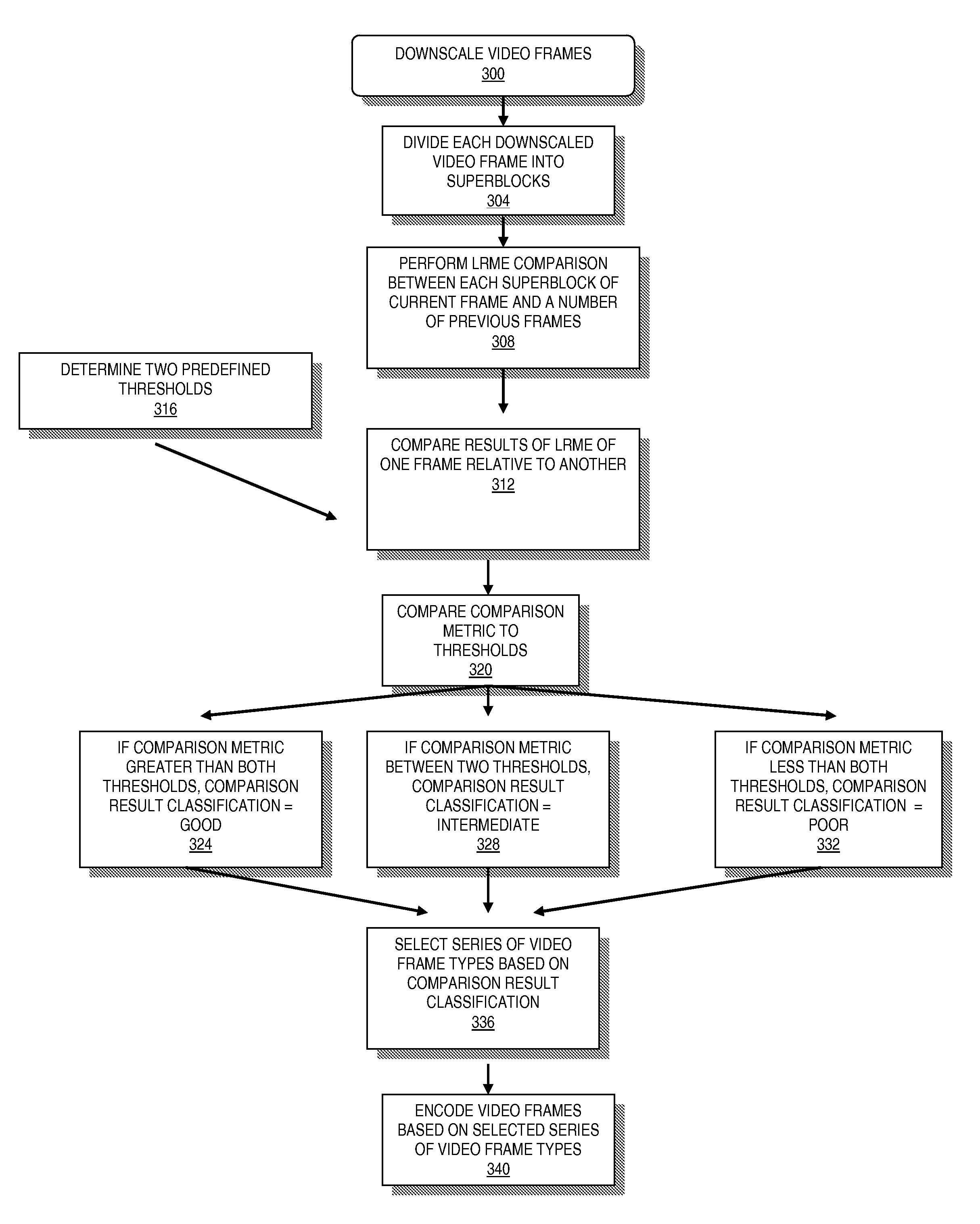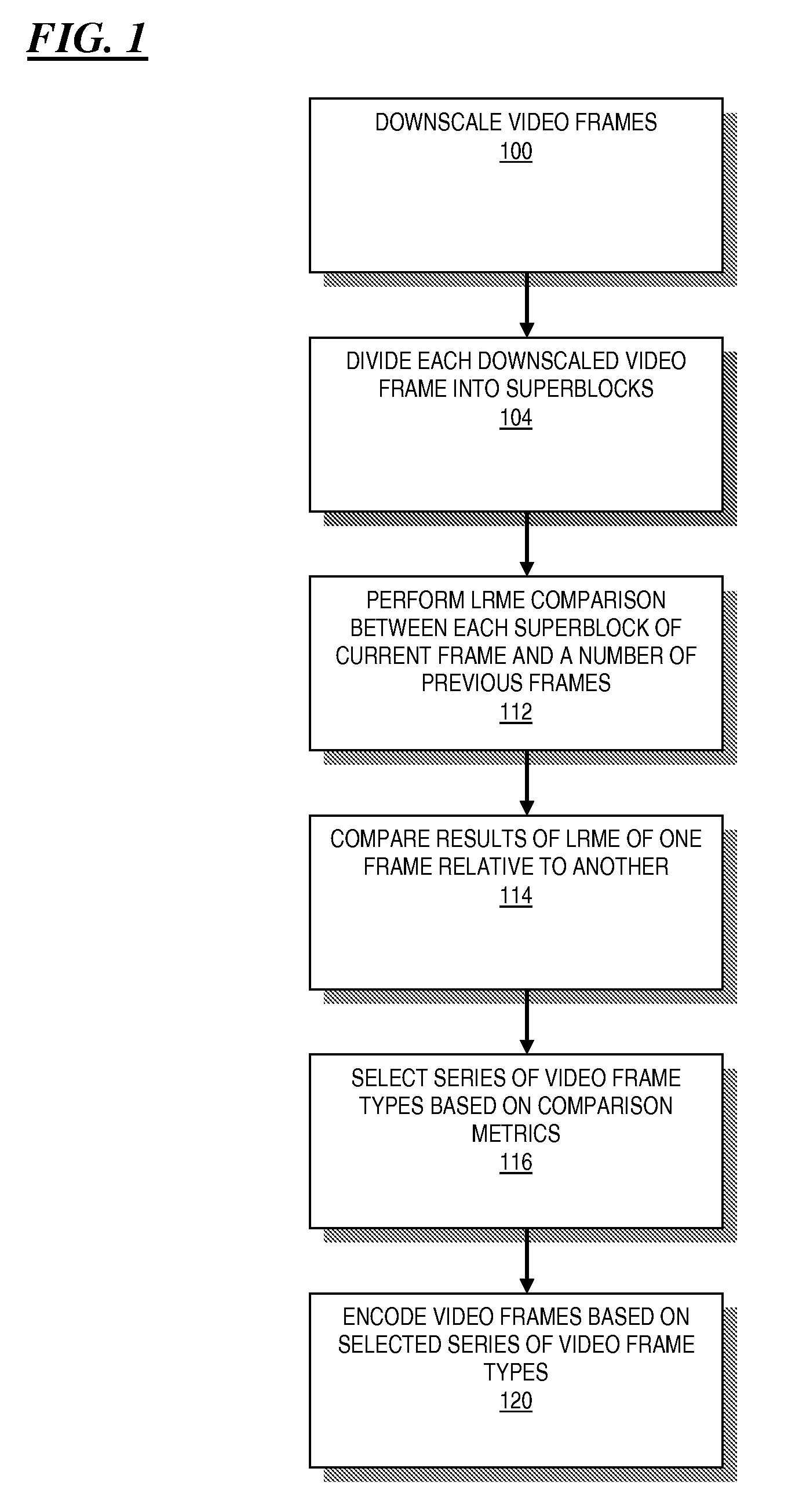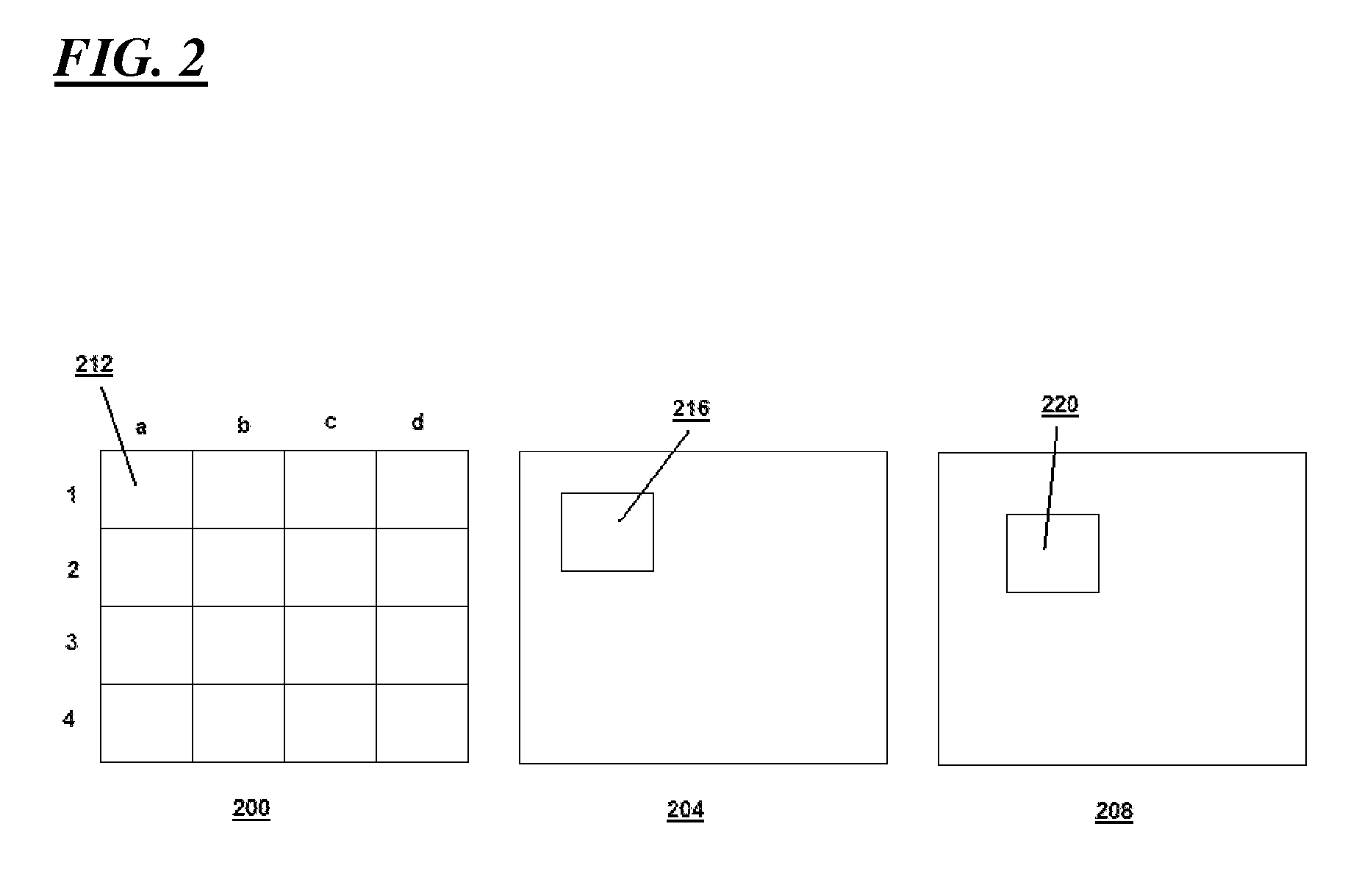Determination of optimal frame types in video encoding
a video encoding and frame type technology, applied in the field of encoding video data, can solve the problems of ineffective cost-effective solutions and suffer the quality of the resulting encoded video, and achieve the effect of simple and low-cost implementation and higher quality playback of video
- Summary
- Abstract
- Description
- Claims
- Application Information
AI Technical Summary
Benefits of technology
Problems solved by technology
Method used
Image
Examples
Embodiment Construction
[0018]FIG. 1 illustrates, at a summary level, steps for encoding video frames in accordance with various embodiments of the invention. First, the video frames are downscaled (STEP 100) and divided into superblocks (STEP 104). For each superblock, an LRME process is performed, comparing the current frame and a number of previous frames until a reference frame (i.e., an I or P frame) is encountered. The comparisons may, in some embodiments, be performed in display order (STEP 112). The LRME results of one frame relative to another may be assessed relative to different metrics (STEP 116). The results of these comparisons are then used in selecting a series of video frame types (STEP 116), which are used to encode the video frames (STEP 120).
[0019]Referring to FIG. 2, a series of downscaled video frames 200, 204, 208 are shown. The original, full-size video frames may be, for example, uncompressed television signals, stored in a digital format. In the example of FIG. 2 above, the frame ...
PUM
 Login to View More
Login to View More Abstract
Description
Claims
Application Information
 Login to View More
Login to View More - R&D
- Intellectual Property
- Life Sciences
- Materials
- Tech Scout
- Unparalleled Data Quality
- Higher Quality Content
- 60% Fewer Hallucinations
Browse by: Latest US Patents, China's latest patents, Technical Efficacy Thesaurus, Application Domain, Technology Topic, Popular Technical Reports.
© 2025 PatSnap. All rights reserved.Legal|Privacy policy|Modern Slavery Act Transparency Statement|Sitemap|About US| Contact US: help@patsnap.com



